
A lot of cooking comes down to simple physics. Porous foods cook more quickly than dense foods, small pieces cook more quickly than big pieces, and uniform pieces cook more evenly than randomly-shaped pieces. That's why many recipes call for vegetables, or meats such as pork, to be cut into specific sizes and shapes. For example, a stir-fry recipe might call for julienne pork.
Introduction to Julienne
Julienne is a French term, like so many others that are used in the kitchen. It means cutting your pork into long, thin, evenly-shaped strips. In the professional kitchen "julienne" refers to strips of precisely one-quarter inch square, and three inches long. Chefs also use the terms "allumette" for a smaller version, or "batonnets" for a larger version. At home, you don't have to worry about precise sizes. As long as you cut your pork into thin, even strips of the same thickness and length, you'll be fine.
Julienning Chops
Cutting your pork into julienne strips isn't rocket science, but there's definitely a bit of technique involved. For example if you're turning pork chops into julienne you should start by cutting away any bones in the chop, and trimming the rind of fat from around the edge. Remove any visibly gristly sections as well. Cut the chop into long strips, approximately a quarter-inch wide. Cut those strips into a convenient length, usually two to three inches. Turn your strips on their sides, and cut them again lengthwise. If your chop was a half-inch thick cut it in half, or if it was an inch-thick cut it in quarters. Continue, until all the pork is julienned.
Julienning a Roast
For larger quantities of strips, you can cut julienne from a pork roast. Cut the roast across the grain of the muscles into strips one-quarter inch wide. Once you've cut it down into strips, cut the strips to a convenient length and cut them again lengthwise into julienne. Rolled, deboned roasts from the shoulder have muscles going in several directions, so they're relatively complicated to cut. Unless you have the time and patience -- or it was a really great price -- it's easiest to start with a loin roast, which is quick and easy to julienne.
Tips
It's easiest to cut julienne with a very sharp knife, preferably a chef's knife or santoku with a slight curve to the cutting edge. Sharpen the knife before you start cutting. Raw pork is soft and will tend to slide around as you try to cut it, creating uneven strips. It's easiest to work with if you partially freeze it first, to the point that it's beginning to stiffen but not yet hard. If the pork was frozen to begin with, cut it as soon as it's thawed enough to be slightly pliable.
Related Articles

What Are Pork Cutlets?
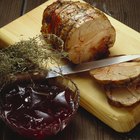
What Does It Mean to Score Roast Pork?

How Do I Blunt Cut My Hair?
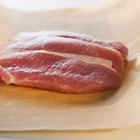
How to Cook Pork Pinwheels
What Are the Less Expensive Cuts of ...

How to Cook Pork Shoulder Strips
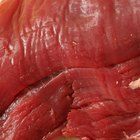
How to Trim and Tie a Beef Tenderloin

How to Cut Up Your Deer Tenderloins

How to Hem a Shirt Collar

How to Cook Venison Inside Loin

Do I Need to Tie a Sirloin Roast?
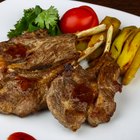
Rib Vs. Loin Grilled Lamb Chop

Secrets to Tender Breaded Pork Chops

How to Cut Asian Hair

What Cuts of Meat Can I Get From Deer ...
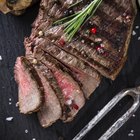
What Can I Cook With a Beef Tenderloin ...

Differences in Acorn & Butternut Squash

Types of Pork Chops

How to Cook Pancetta

How to Cook Bacon Wrapped Pork Chops in ...
References
- Professional Cooking; Wayne Gisslen
Writer Bio
Fred Decker is a trained chef and prolific freelance writer. In previous careers, he sold insurance and mutual funds, and was a longtime retailer. He was educated at Memorial University of Newfoundland and the Northern Alberta Institute of Technology. His articles have appeared on numerous home and garden sites including GoneOutdoors, TheNest and eHow.
Photo Credits
NA/AbleStock.com/Getty Images